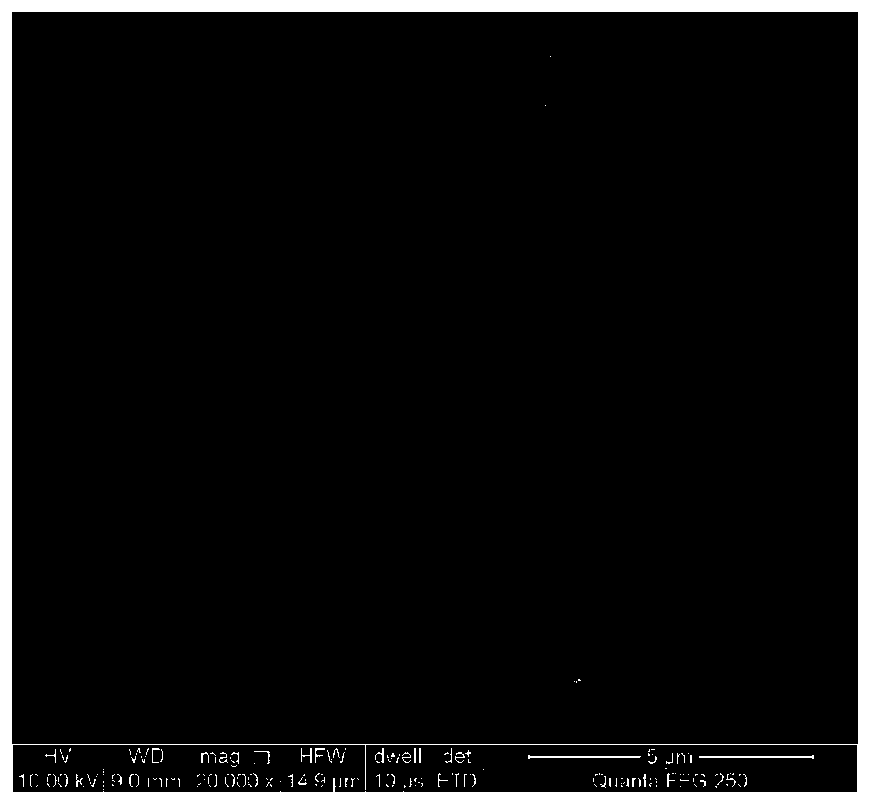Ceramic pulp for photo-curable 3D printing and preparation method and application of ceramic pulp
A ceramic slurry, 3D printing technology, applied in ceramic molding machines, manufacturing tools, additive processing, etc., can solve the problems of unsuccessfully preparing high-density ceramic parts, and achieve high-density effects
- Summary
- Abstract
- Description
- Claims
- Application Information
AI Technical Summary
Problems solved by technology
Method used
Image
Examples
Embodiment 1
[0032] Take bisphenol A epoxy acrylate (BAEA), trimethylolpropane triacrylate (TMPTA), tripropylene glycol diacrylate (TPGDA), isobornyl methacrylate (IBMA), initiator diphenyl (2,4,6-Trimethylbenzoyl)phosphine oxide (TPO), stirring and defoaming to obtain a premix, adding powdered ZrO 2 , PVP mixed evenly to obtain ceramic slurry,
[0033] The addition amount of each component in the ceramic slurry is as follows:
[0034] BAEA: 2.00g
[0035] TMPTA: 2.00g
[0036] TPGDA: 3.00g
[0037] IBMA: 3.00g
[0038] TPO: 0.2000g..
[0039] ZrO 2 : 30.0000g
[0040] PVP: 0.1500g
[0041] The slurry obtained in Example 1 was subjected to a sedimentation test and a viscosity test. As a result, it was found that the slurry did not settle significantly after standing for 7 days, indicating that the slurry had better stability. Viscosity test finds that the slurry in embodiment 1 is 10s at shear rate -1 , the viscosity is 16.85Pa·s, which is lower than that without dispersant.
Embodiment 2
[0046] Take bisphenol A epoxy acrylate (BAEA), trimethylolpropane triacrylate (TMPTA), tripropylene glycol diacrylate (TPGDA), isobornyl methacrylate (IBMA), initiator diphenyl (2,4,6-Trimethylbenzoyl)phosphine oxide (TPO), stirring and defoaming to obtain a premix, adding powdered ZrO 2 , PVP mixed evenly to obtain ceramic slurry,
[0047] The addition amount of each component in the ceramic slurry is as follows:
[0048]
[0049] Carry out viscosity test to the slurry gained in embodiment 2, be 10s at shear rate -1 At the time, the slurry viscosity was 28.28Pa·s, slightly higher than the slurry viscosity in Example 1.
Embodiment 3
[0055] Take bisphenol A epoxy acrylate (BAEA), trimethylolpropane triacrylate (TMPTA), tripropylene glycol diacrylate (TPGDA), isobornyl methacrylate (IBMA), diphenyl (2 , 4,6-trimethylbenzoyl) phosphine oxide (TPO) was stirred and defoamed to obtain a premix, and powder ZrO was added to the premix 2 , PVP and mix to obtain ceramic slurry.
[0056] The addition of each component in the ceramic slurry is as follows: the solid content is 70wt%
[0057]
[0058] Carry out viscosity test to the slurry gained in embodiment 3, be 10s at shear rate -1 , the slurry viscosity was 12.33Pa·s.
PUM
| Property | Measurement | Unit |
|---|---|---|
| density | aaaaa | aaaaa |
| hardness | aaaaa | aaaaa |
| density | aaaaa | aaaaa |
Abstract
Description
Claims
Application Information
 Login to View More
Login to View More - R&D
- Intellectual Property
- Life Sciences
- Materials
- Tech Scout
- Unparalleled Data Quality
- Higher Quality Content
- 60% Fewer Hallucinations
Browse by: Latest US Patents, China's latest patents, Technical Efficacy Thesaurus, Application Domain, Technology Topic, Popular Technical Reports.
© 2025 PatSnap. All rights reserved.Legal|Privacy policy|Modern Slavery Act Transparency Statement|Sitemap|About US| Contact US: help@patsnap.com



